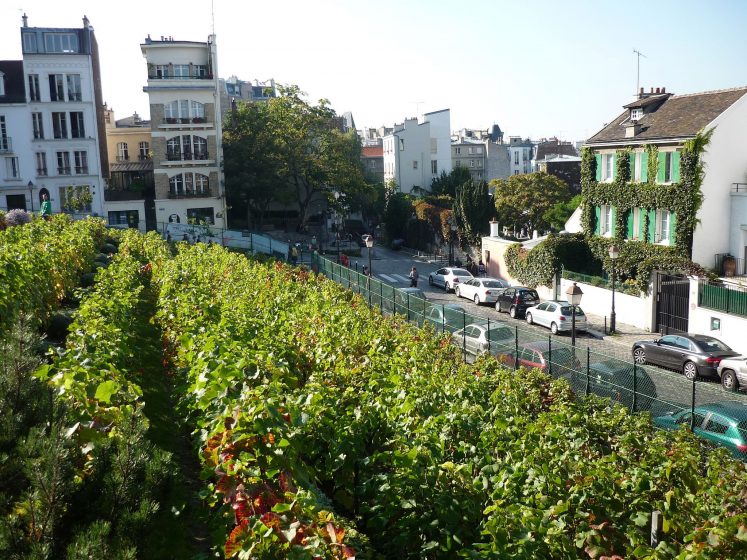The Best Guide To City Blooming
Table of ContentsThe Definitive Guide to City BloomingRumored Buzz on City BloomingSome Of City BloomingThe smart Trick of City Blooming That Nobody is Talking About5 Easy Facts About City Blooming Explained

As you stroll the streets of the Bronx, Southside Chicago or East Oakland, you may see have even seen large stories of ripening fruits and veggies being gathered. What exactly are city ranches and area yards? Are they different? If so, how? And more notably, how can you sustain them? Urban farming, metropolitan farming, or metropolitan gardening is the practice of cultivating, processing and distributing food in or around metropolitan locations.
Generally, urban farming as a practice is a bigger investment than horticulture. There are countless a lot more hours invested into the trivial matters of farming, from the crop strategy to the often tending of your beds. This time commitment takes on a whole new definition once you realize the objective that is being functioned in the direction of and committed, particularly that of gaining a bountiful yield of crops to be consumed.
A neighborhood yard is a single parcel gardened collectively by a team of people. Area gardens make use of either individual or shared stories on private or public land while creating fruit, veggies, and/or plants grown for their appealing look. The fundamental version here is that a big team of people each add a reasonably percentage of time to functioning their own plot, and get the fruits of their labor because of this.
More About City Blooming

There are area yards, a number of whom Tiny Axe Peppers has actually partnered with, that deal support to evacuees, low-income households, kids groups, and neighborhood companies by helping them develop and grow their very own yards. The distinctions between community garden and metropolitan farm are nuanced, though in the long run the very same basic task takes placefood crop growing yet within different business structures.
Urban ranches are typically more this content service and technology oriented, with the key purpose of making the most of returns and offering produce. Commercial metropolitan farms are usually targeted at expanding production on typically tiny acreage with developments in innovations such as tank farming, hydroponics, and greenhouses and might partner with a business kitchen to create locally-produced value-added products such as jams and sauces.
Getting My City Blooming To Work
The produce is normally grown on a much smaller scale and is taken home to consume at home or to share. By supplying much required environment-friendly areas in penniless, concrete metropolitan locations, they enable for the benefits of backyard horticulture to those doing not have backyards, and function as superb instances of self-organization and area activism.
Some area yards, typically in city locations, move right into expanding for business usage while some urban farms open up their land for even more socially conscious advantages. Regardless of exactly how you specify and set apart the 2, they are both favorable forces for good in cities around America and the globe.
As all of Tiny Axe Peppers' warm sauces are sourced with peppers from area yards, your purchases directly aid fund these neighborhood tasks (http://go.bubbl.us/e31e8c/192c?/City-Blooming). Take part in the change by.
A friend of mine recently commented in a discussion regarding gardening that "It's intriguing, I have actually always believed that farming as a practice is rather like gardening. As I spent more and even more time in my Urban Farming class I've come to realize that to state that horticulture is a small expansion of farming would be a little bit of stretch.
3 Easy Facts About City Blooming Shown
They both focus on the care of plants for some goal that can be nourishment, earnings or simply the enjoyment of the craft. They both need a financial investment on top of a time investment, something that a great deal of individuals in our rapid paced life do not have a whole lot of.
We can see that the resemblances are abundant, but are the differences sufficient to produce a distinction? As a student at NYU I have the chance to collaborate with the leave It Much better Structure, a group that instructs standard nourishment and gardening to senior high school students. https://experiment.com/users/cityblooming. This experience offered me an in-depth venture right into the world of amateur gardening past what lots of people have actually been in call with
Farming as a method is a larger investment than gardening. There are many more hours invested right into the trivial matters of farming, from the plant strategy to the tending of your beds.
The typical gardener tackles his responsibilities as a chore instead of a necessity and because of this identifies his or herself from the farmer. However with this difference in hand, they are both calming and relaxing workouts that any individual can get, which on its own ought to be an advertisement for both.
Getting My City Blooming To Work
Something failed - garden care. Wait a minute and attempt once more Try again